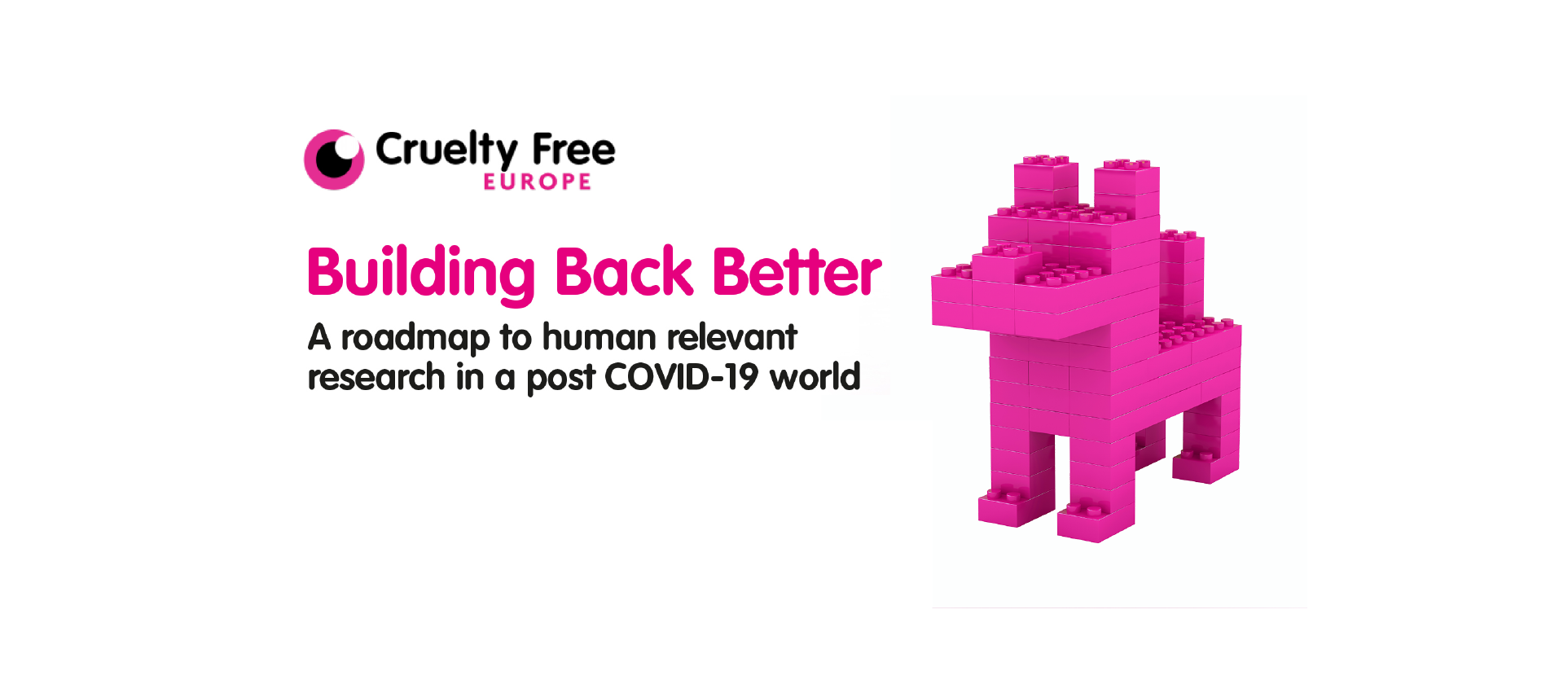Increased collaboration and fixed targets needed to end EU animal tests
European decision makers, scientists and industry agree we need to work together on comprehensive plan with agreed goals, milestones and timetable to bring animal testing to an end across Europe

A broad range of stakeholders from the EU and the US, including decision-makers, academics, scientists, campaigners and industry representatives backed a call for Europe to develop and adopt a roadmap with concrete goals, set targets and deadlines to replace animal testing at Building Back Better – A Roadmap to Human Relevant Research in a Post-COVID19 World, our online conference looking at the replacement of animal tests with humane and human relevant alternatives.
Ten years since EU Directive 2010/63/EU was adopted on the protection of animals in science, the use of animals in European research remains unacceptably high. With the EU decades away from achieving the goal of replacing this with non-animal methods, participants agreed on an urgent need for an effective strategy with fixed milestones and deadlines, like those seen in other EU sectors such as climate change and pollution, to realise change for animals in Europe’s laboratories and for human health.
In the days’ opening session MEP Tilly Metz said: “Ten years since adoption of the EU directive, despite significant scientific developments and breakthroughs in non-animal testing methods, the numbers of animals used in research is still disturbingly high. However, crisis is also an opportunity. Post-COVID19 we now have a chance to reassess where we stand as society and build back better. We need an effective strategy with clear targets and milestones.
We need a concrete plan and investment to transition to non-animal human relevant science. This should be a much bigger priority in Europe. However, we are seeing motivated scientists and decision makers, pushing for change. We must all now work together towards developing a concrete roadmap and an investment plan.”
The first of the day’s three workshops examined examples of pro-active replacement and reduction plans for animal research. In the second workshop participants looked at the call for the EU to take the lead in sustainable science and sustainable solutions to reduce the suffering of animal in laboratories, while the final workshop examined what the EU’s bans on cosmetics animal testing have achieved since coming into final effect in 2013 and what the future of the bans looks like.
The conference was concluded by Vanessa-Mae, world-renowned violinist and Ambassador for Cruelty Free International, who spoke of her own passion for animals and implored the assembled representatives to work together in order to end the suffering of animals in European laboratories.
Key solutions highlighted in the conference for ending the testing of animals in Europe and replacing animal tests with human and human relevant non-animal methods include:
“Ten years since adoption of the EU directive, despite significant scientific developments and breakthroughs in non-animal testing methods, the numbers of animals used in research is still disturbingly high" MEP Tilly Metz
- Increased public and political pressure to drive change
- Global harmonisation to reduce region-specific barriers in terms of data requirements and acceptance of alternatives
- Increased collaboration between all players – including early involvement of regulators, data sharing between companies and cross-sector collaboration
- Education, both in terms of young scientists (e.g. include non-animal technology as part of school/university curriculum) and increased dissemination of information across the scientific community
- Increase in dedicated funding for non-animal technologies to encourage innovation and realise the potential of these methods
- Change in scientific mindset that animal tests are not the gold standard – also need to increase confidence in non-animal methods
- Transparency in terms of where the data gaps are and how they can be filled
- Focus on enforcement and availability of accepted non-animal methods
- Timely updates and changes to legislation that often impede flexibility
